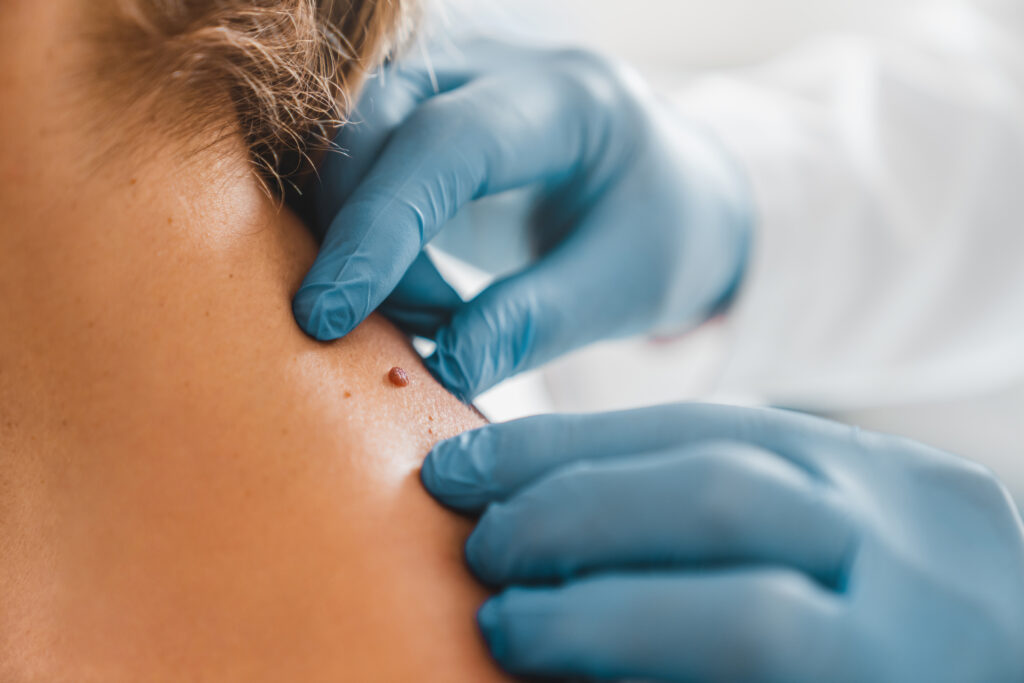Prostate cancer is one of the most common cancers found in men, excluding skin cancer. According to Cancer.Net, in 2022, 268,490 men in the United States will be diagnosed with prostate cancer. Around 60% of all cases will be diagnosed in people over the age of 65, but when detected early, there is an overall five and ten-year survival rate of 98%. Screenings, early detection, and advanced treatments are keys to these high survival rates.
Types of Prostate Cancers
Types of prostate cancers include:
- Adenocarcinoma
- Small cell carcinomas
- Neuroendocrine tumors
- Transitional cell carcinomas
Some of these cancers can grow and spread quickly, but most grow slowly.
The Risk Factors
Risk factors can include:
- Age, with men over the age of 65 having a higher rate of incidence
- Genetics
- Family History
- Race or ethnicity.
Always discuss your risk factors with your physician.
Screening for Prostate Cancer
Prostate cancer can often be found early by testing for prostate-specific antigens, in a man’s blood. In addition, a digital rectal exam performed by a physician or qualified medical personnel can be performed. The American Cancer Society (ACS) recommends that men should make an informed decision with their health care provider about whether to be screened for prostate cancer. The decision should be made after getting information about the uncertainties, risks, and potential benefits of prostate cancer screening. The discussion about screening should take place at:
- Age 50 for men who are at average risk of prostate cancer and are expected to live at least 10 more years.
- Age 45 for men at high risk of developing prostate cancer. This includes African Americans and men who have a first-degree relative (father or brother) diagnosed with prostate cancer at an early age (younger than age 65).
- Age 40 for men at even higher risk. This group includes those with more than one first-degree relative who had prostate cancer at an early age.
Diagnosing Prostate Cancer
If the results of a PSA or an exam suggest the possibility of prostate cancer, a biopsy is typically the next step. A small sample of the prostate is removed through a core needle biopsy, usually performed by a urologist, and is viewed under a microscope. During the biopsy, the urologist will also look at the prostate in real-time with an imaging test like a transrectal ultrasound. The urologist can sometimes elect to perform a prostate MRI instead of a biopsy; however, a biopsy may still be indicated in the future.
The biopsy is sent to the laboratory, and it is tested. If cancer is found, it is assigned a grade called the Gleason Score or Grade Group. The American Cancer Society explains the Gleason System assigns grades based on how much cancer looks like normal prostate tissue. If cancer looks a lot like normal prostate tissue, a grade of 1 is assigned. If cancer looks very abnormal, it is given a grade of 5. Grades 2 through 4 have features in between these extremes. Prostate cancer often has areas with different grades so a grade is assigned to the two areas that make up most of cancer. The two grades are added together to yield the Gleason Score. The first number assigned is the grade that is most common in the tumor.
Based on the Gleason score, prostate cancers are assigned to three groups:
- Gleason Score of 6 or less – well-differentiated or low-grade
- Gleason Score of 7 – moderately-differentiated or intermediate-grade
- Gleason Score of 8 to 10 – poorly-differentiated or high grade.
The American Cancer Society reports that in recent years, the Gleason Score might not always be the best way to describe the grade of cancer because prostate cancer outcomes can be divided into more groups than just the three groups mentioned above, and the scale of the Gleason Score can be misleading for patients. Because of these reasons physicians have developed Grade Groups ranging from 1 (most likely to grow and spread slowly) to 4 (most likely to grow and spread quickly).
- Grade Group 1 – Gleason 6 or less
- Grade Group 2 – Gleason 3+4=7
- Grade Group 3 – Gleason 4+3=7
- Grade Group 4 – Gleason 8
- Grade Group 4 – Gleason 9-10.
A patient may see a Gleason Score and/or Grade Group on their laboratory results.
Some results may reveal that cells may not look like cancer but they are not quite normal either. These results are called prostatic intraepithelial neoplasia (PIN). In PIN, there are changes in how the cells of the prostate look, but the abnormal cells don’t appear to grow into other parts of the prostate as cancer cells would. PIN is often divided into two groups:
- Low-grade PIN – The patterns of prostate cells appear almost normal
- High-grade PIN – The patterns of prostate cells look more abnormal.
In both circumstances your urologist will continue prostate cancer screening, however, if an atypical finding is discovered (ASAP), a repeat biopsy or MRI of the prostate may be indicated.
For more information on your risks of prostate cancer, and to schedule your screening, please contact your physician. If you need a primary care physician or a urologist, visit https://providers.steward.org/s/.
To find a doctor or schedule an appointment, visit Steward DoctorFinder™.




